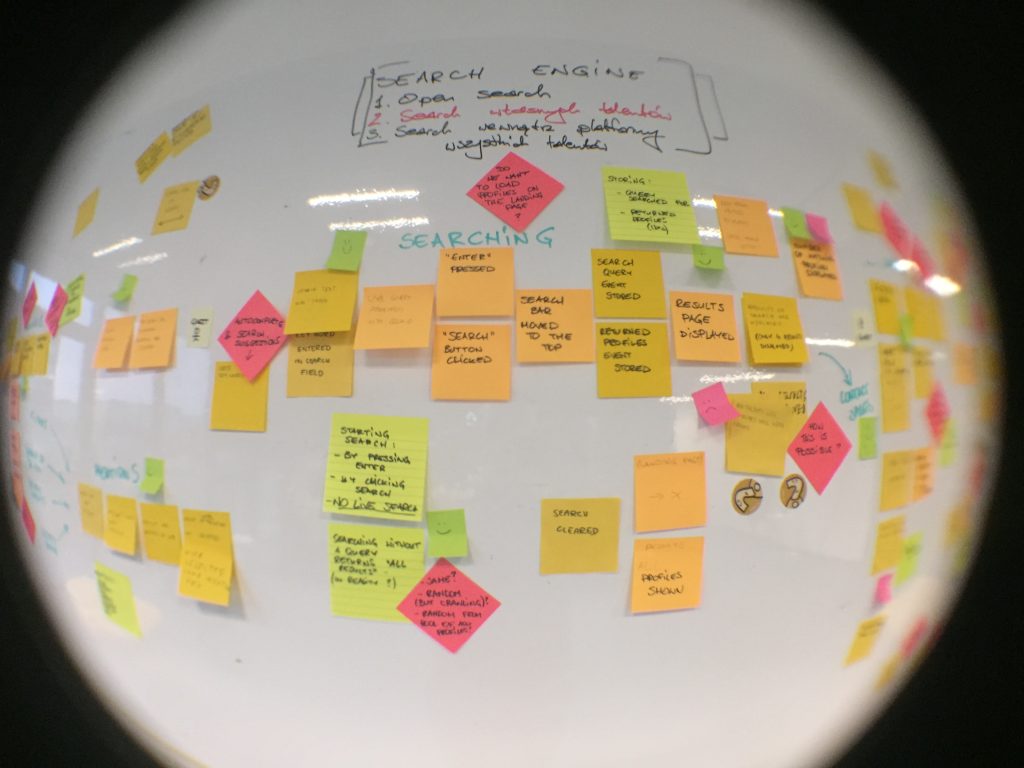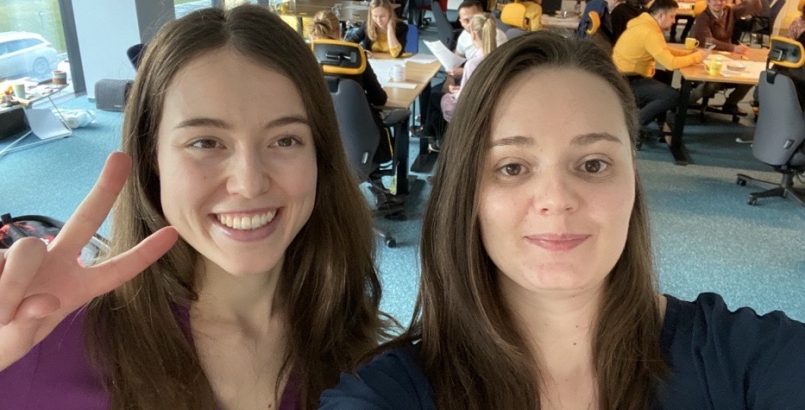Episode 1: Goodbye Sandbox, Hello Miro
The Future of Workshops is our new blog series produced by Talent Alpha’s uber-talented UX Team – Anna Brudek & Anna Kołota. Each episode they’ll take you behind the scenes of some of the brain storming, workshopping and event storming they facilitate to give you insight into how best to leverage tools, technology and UX know-how to meet the challenges of our new reality.
To think that less than a month ago we had the luxury to use two wall-length whiteboards for our workshop sessions in the ‘Sandbox‘ meeting room of Talent Alpha’s HQ. The situation changed drastically and like most companies, we had to get used to virtual meetings and brainstorming sessions literally overnight.

With some serious help from the Miro digital canvas collaboration tool, we were able to quickly deliver successful ideation and event storming sessions for a large audience. If you’ve never used this tool it’s actually super fun and once you get the hang of it, it’s easy to be really creative for even the most basic users. Miro supports different kinds of boards which is a huge asset for facilitators. It reduces the amount of arduous work and speeds up the whole process.
There are some guiding principles which help us to keep moving forward in our workshops and get over the inevitible obstacles connected with not being able see each other face-to-face. We discovered these through our own (extensive!) usage of Miro although these principles can apply to other collaboration tools as well:
Guiding Principle #1:
Always check if all of the participants know how to use the tool. In order for people to feel comfortable with this method of expression and collaboration, make sure they know the basics of the tool you are using. Some functionalities may be easier to grasp for a Marketing Specialist than to someone who doesn’t work with graphic tools on a daily basis.
This also affects the type of tool you are using. Think about who you have in your company and choose wisely – a gentle learning curve and user-friendly interface is what you are looking for.
Guiding Principle #2:
Make breaks to help people focus. Sitting and looking at one’s screen all day literally drains the creative powers from your colleagues. Make sure your participants area all feeling good and are ready for the challenges you’ve prepared! Our research has revealed that having a break at least once per hour is optimal for groups to thrive. You may want to ask one person to be a time-keeper and help you with staying on track. You may even want to start your workshop with a quick stretch or two!
Guiding Principle #3:
Prepare yourself. Canvases are helpful to express the goal and schedule of the meeting. Many tools (e.g. Miro, Mural) have templates which you can use to facilitate the meeting. Preparation also includes being ready to help the participants with any tool issues or having back-up plans for bad connectivity.
Below is a short screen grab of a recent Miro Workshop we facilitated.
Tune in to our next episode of the Future of Workshopping when we bring in Talent Alpha’s UI guru Bartek to help us explore and explain our UX mastertool and platform rosetta stone: Figma.


Read also
The Human Cloud Ecosystem - Re-Shaping the Business World
Although cloud service was already on the rise before the pandemic, it wasn’t a necessity for many of the people in the industry. What has changed since then?
How Cloud Technology Became More Human
Working remotely has never been as popular as it is now, clearly demonstrating that its perks outweigh its disadvantages. Read more about it here.
VIDEO: Bridge Your Tech Talent Gap Webinar
On Wednesday March 3rd, Talent Alpha hosted our webinar Talent Intelligence in 2021: Understand, Unlock & Unleash Hidden Value in Your Organization